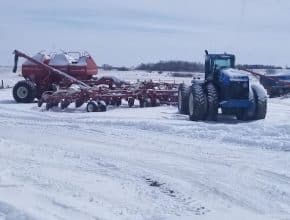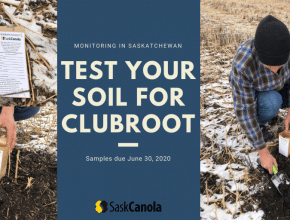Canola seed placed at a consistent depth across the width of the seeding tool will improve seed-to-soil contact, increase seed survival and help the crop emerge evenly. The goal is to have each canola seed placed into the soil at a depth close to one inch. Here are tips to improve the performance of the seeding tool…
April 9, 2020 – Issue 5
-
-
Farmers can greatly improve the survival rate of canola seed by achieving uniform seed depth in the half inch to one inch range. For this podcast, host Jay Whetter talks with Shawn Senko of the CCC, Rob MacDonald of BASF and Darcy Missler of Bourgault about practical tips to prep the seeding tool for seed survival supremacy…
-
The Canola Watch team of CCC agronomy specialists has a few priorities for 2020. As a way to check in on how their priorities match up with current practices, we have a short survey for canola growers and for agronomy advisers (like retails, agronomists and CCAs). The survey will take about two minutes. Please take the time to help us…
-
Farmers with high-moisture canola will need a plan to protect that canola – and turning on the fans without adding heat to the air might not be the best approach. This time of year, most days are poor drying days. When air is not warm enough to actually do any drying, then you’re just warming up the bulk enough to…
-
While Canola Watch is not a hub for Covid-19 updates, here are a few tips that might help with spring preparations…
-
A spring plan of action, especially if it includes harvest plus spraying plus seeding, might take some of the stress off the season ahead. We never want to see people hurt on the farm, but with COVID-19, it may not be the best time for an emergency room visit for a broken limb from rushing down the tractor steps…
-
While waiting for the snow to melt, perhaps check around for marketing opportunities. For one thing, spring-harvested canola is less stable in storage than fall-harvested canola. And delivery points may require samples in advance of delivery so they can run more detailed tests…
-
The most accurate sampling time is just prior to seeding, but this isn't always practical because time is needed to purchase and perhaps place the fertilizer before seeding. The next best alternative for this time of year is early spring sampling done after the soil has thawed and is no longer saturated from snow melt…
-


